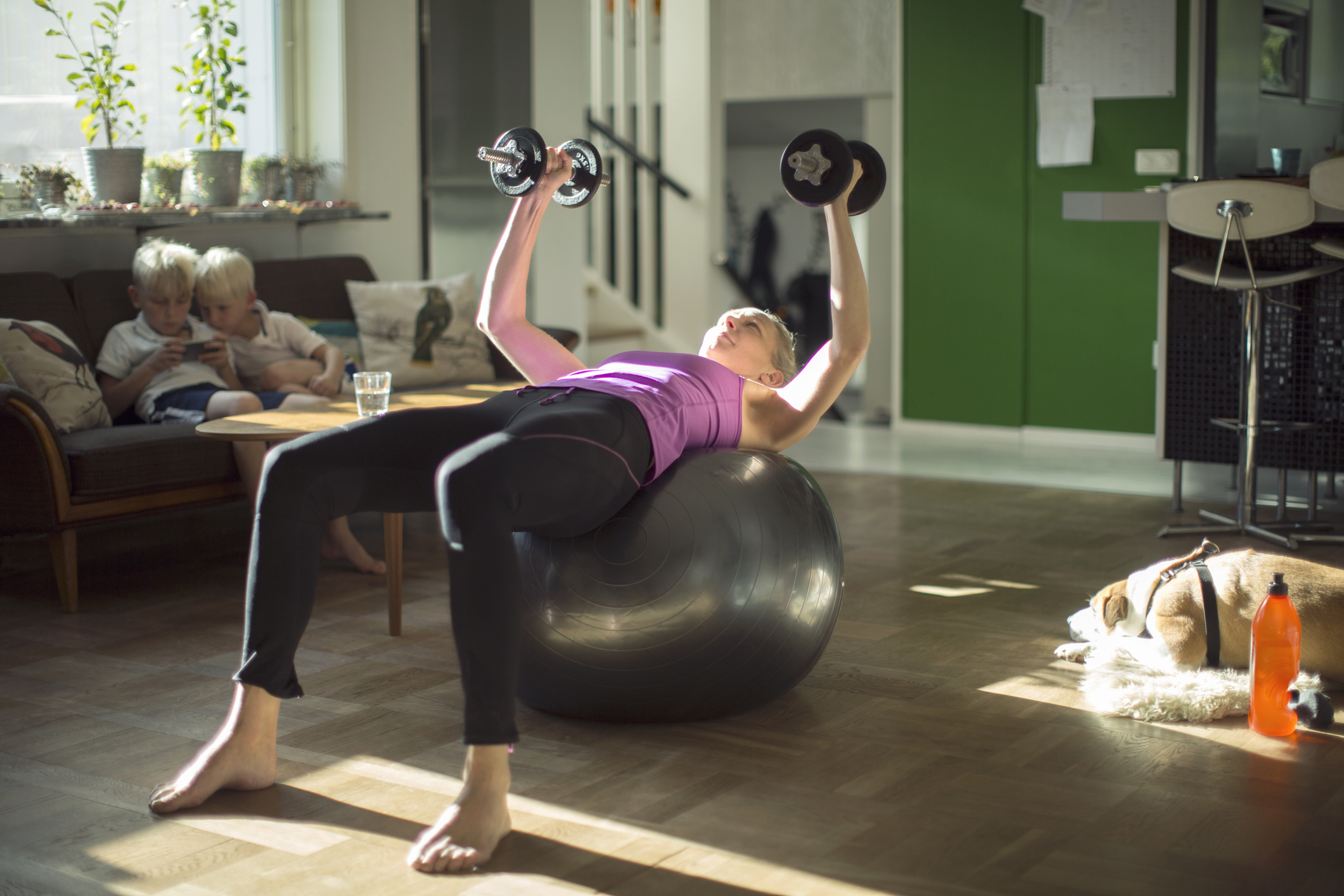5 Mistakes People Make When Lifting Weights at Home

One of the most important aspects of any workout, but especially weight lifting, is practicing good form for each exercise you do. But that can be difficult to master when you don't have someone watching you and showing you what to do IRL.
It's always a good idea to work with a trainer in some capacity, at least at first, even if it's on a video or Zoom chat, so you get a baseline of what to expect in your workout. But if that's out of your price range, or you just want to get started now, let this be your guide.
Below, two certified trainers share the most common mistakes people make when they start out with weight lifting, plus their best tips to stay safe and get the best results as you start your home strength training routine.
Why should you lift weights at home?
"Weight training builds muscle which, apart from appearances, can help promote a healthy metabolism and support sustainable fat loss and/or weight loss efforts," says April Whitney, certified personal trainer and founder of Smalletics. "Weight training also improves bone density which is important for women especially, who are at an increased risk of osteoporosis with age."
If one of your goals is to lose weight and boost your metabolism, strength training is the way to go. But if that's not your goal, weight lifting offers a ton of other benefits like improving posture, flexibility, mobility and sleep, and helps reduce stress and improve energy too, according to Whitney.
"One of the misconceptions about weight training is that you need fancy machines," Whitney says. "In reality, you can reap the benefits of strength training and get functionally fit right from your own home with just a pair of dumbbells or resistance bands in combination with bodyweight exercises."
Another benefit of lifting weights at home is the intimidation factor is significantly lower for newbies. For some people, entering the weight room at a crowded gym is intimidating enough to make them want to quit or avoid getting started in the first place.
"You can take the time you need to learn the moves and build confidence in what you're learning," Whitney says. "It's also convenient to have an at-home routine, and you can squeeze it in on your own terms without traveling or abiding by the gym's schedule."
Now, let's explore five common beginner weight-lifting mistakes and how to fix them.
1. Using incorrect form
Learning correct form is one of the most important parts of your weight-lifting routine, since not using correct form and technique can lead to injury.
"Some common mistakes with form include not correctly engaging or bracing the core and also not spending enough time learning the basic prime movements of the human body, which include the hip hinge, the squat and the press," Whitney says.

How to fix it
"Spend time early on studying deadlift, squat and press videos, including the chest press and shoulder press, or hire a coach who can give you feedback, whether in person or virtually," Whitney says.
If you don't want to hire a trainer, you can also record yourself doing each workout move with your form to watch after. "If you're not in the market for a trainer, I suggest propping up your phone and recording yourself," says Tatiana Lampa, a certified personal trainer and founder of Training with T. You can compare your own form to a video demonstrating the proper form, and then readjust as needed.
2. Skipping the warm up
It's tempting to jump straight into a workout, but with weight training, it's especially important to take the time to warm up properly. "Your warm up doesn't need to be a long elaborate routine, but it's really important to get your overactive (tight) muscles lengthened and inhibited," Lampa says.
How to fix it
You can start with foam rolling, or a dynamic yoga flow to warm up your body. "From there start activating the muscles you'll be working," Lampa says. "I like to start with some core and glute work before my workout."
3. Using the same weights for months at a time
The key to getting strong and seeing the results you want with weight training is to progressively challenge yourself. In other words, don't let your workout feel too easy.
"To continue to make progress, you must increase the demands (the resistance) on your body by increasing the weights every four to six weeks, or whenever you can. You want to be able to perform all of the reps of a given exercise with good form, with the two final reps feeling challenging," Whitney says.
How to fix it
If the reps you do start to feel easy, then you know that's a sign to move up a few pounds. "The good news is, the research shows you can make a lot of progress here if you are new to weight training. This is colloquially referred to as 'newbie gains,'" Whitney says.
If you have the budget, this is the time to invest in a new set of dumbbells or a kettlebell. But if you're not ready to spend the money, or can't find weights to buy (there's an ongoing shortage), you can use household items that you already have.
4. Overtraining or using weights that are too heavy
On the flip side of not progressing your weights often or challenging yourself is overdoing it.
"It can be easy to fall into a trap of thinking you need to lift the heaviest weight possible to see progress, however this can backfire leading to injury or overtraining," Whitney says.
How to fix it
"If you can't finish a set without taking a break or severely modifying your form, that's a sign to drop the weight lower, until you find the right amount of challenge," Whitney says. "Proper form at a lower weight will train you better than a heavier weight with improper form in the long run."
5. Not following a program
There's nothing wrong with following YouTube or Instagram workout videos to help you get started, but you will get the best results if you have some sort of workout plan or strategy in place.
"You'll save a lot of time and energy investing or finding a proven program," Whitney says. "Not only will the workouts be progressive with time, but it will also teach you how to perform the exercises safely, educate you around what weights to choose, how to track progress and more (if it's a good program!)."
How to fix it
You can search online for workout programs that focus on your goals, like programs to help you lose weight, or simply build muscle. You can also download apps with guided videos, or some plans have the workouts laid out for you in a PDF or printable calendar you can follow.
No matter what type of program you choose, Whitney recommends "beginners start weight training anywhere from three to five days depending on their current level of fitness. They should be able to increase their weights within the first four weeks if they have been consistent."
The post 5 mistakes people make when lifting weights at home appeared first on c|net

